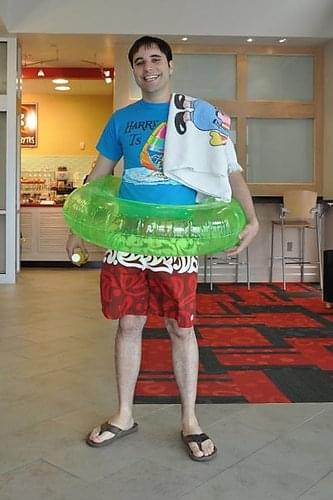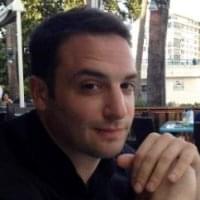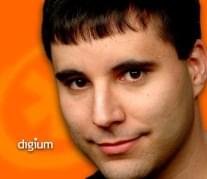In continuation of our Leaders & Innovators series, GetVoIP.com is proud to present an exclusive interview with founder, chairman, and CTO of Digium (now Sangoma), Mark Spencer. Born and educated in Auburn, he wrote Asterisk as a personal solution to the high costs of PBXs, which inevitably became a renowned, cost effective telephony platform for the masses. At a young 35, Spencer has achieved more than most individuals can hope to in their entire lifetime. With a fervor for technology dating back to his later years in elementary school, Spencer is best associated with a distinct pattern of bringing things “to the next level”. As a top open source software, Asterisk relegates users the freedom to modify, change, and improve upon their communications. Spencer released Asterisk to the world back in 1999, and it has since become one of the most downloaded platforms on the market.
Digium are constantly updating their offerings, improving the industry at large through certification and training courses, new integrations, and builds for their breed of IP phones. Developers, partners, and others from the community come in droves for their annual three day conference at Astricon to learn more about the communications tool kit. The company just concluded its fifth Asterisk World event at the ITExpo in Miami as well. Spencer is often on hand at these events, giving powerful keynote addresses to large technology audiences. Aside from providing insights for the community, Mark continues to be a driving force in the seemingly infinite strategic vision and direction of Digium. We had the opportunity to ask him a number of questions pertaining to where the company has been, and where it is going…
How is Digium setting itself apart from companies that have been in VoIP hardware for longer?
Mark: Asterisk has always been about pushing the limits of what we could do in terms of communication. Our focus traditionally of course was on the server side, the PBX, conference gateway, etc. However, we reached a point at which we truly felt constrained by the limits of the traditional SIP, analog and other IP handsets in the market. We also felt like the experience wasn’t as smooth for integrators because you’d sometimes have “dead keys” that didn’t work as expected or required unusual keystrokes to implement features. It became increasingly obvious that we needed to have an endpoint that could supplement Asterisk and Switchvox not just by integrating more cleanly with both (including everything from provisioning to conferencing and voicemail), but that would be extensible by integrators and end users to allow their own applications at the device level to interface with the sophisticated technology they could create on the Asterisk and Switchvox side. So ultimately, this was really about extending the reach of the developer beyond the backroom and right to the desktop.
Of course from the business side, it also helps us better monetize the Asterisk marketplace because not everyone needs an analog or digital interface card, but nearly everyone needs a phone. By properly differentiating our product line, it helps us diversify the revenue stream we use to support the company and the project itself. Asterisk has always been about pushing the limits of what we could do in terms of communication.
How would you describe the office environment and culture at Digium?
Mark: I think we have a unique culture at Digium – we have always tried to ensure that we make it a fun place to work and not just the status quo. We push the boundaries as much as practical — I’m somewhat famous around Huntsville for having a hammock in my office in which many a coworker has come to sit and talk about what was on their mind. Of course as we’ve grown, just what people think is fun has changed a bit (not everyone in sales likes to wear flip flops and listen to loud electronic music while they work for example), so we try keep a balance and stay focused on being as relaxed as possible about things that aren’t core to the business, while being very tied to metrics on the things that are. For example, what an engineer wears, or if an engineer has a huge pet rabbit they bring to work, well that doesn’t really make much of a difference in terms of our product. However, the timeliness of our tech support team is very important and the appearance of our sales team may matter depending on the customer.
We make an effort to keep people connected to the goals of the business including monthly meetings and quarterly “town hall meetings” where we talk openly about the company’s performance, opportunities and challenges. On the lighter side of things, we celebrate monthly birthdays, have bagels every Friday and have many volunteer opportunities where people can get together for fun projects that also make a difference in our community. Once, I even took a popcorn machine around the office, powered by a bunch of universal power supplies and delivered hot popcorn to everyone at work. We’re a pretty active group, so it’s pretty common to see our team running, walking, riding or meeting for soccer, tennis or racquetball.…even the occasional game of ping-pong downstairs, masquerading as a meeting.
Can you explain how the name Asterisk came about?
Mark: The Asterisk symbol is the wildcard symbol in Linux, Unix and even DOS. Since I rarely think small, from the beginning, I wanted Asterisk to do everything in telecom (of course oblivious to the challenge associated with that) and felt the name was appropriate (not to mention it is a key on the keypad of the phone, so a little a little pun in there too – a tradition in open source software titles).
Following the tech crash of 2001, how did Digium manage to ‘pick up the pieces’ and push forward?
Mark: Actually, the tech crash of 2001 was one of the most important and beneficial events in Digium’s history. In fact, had the crash not occurred, I’m not sure that so many early adopters would have been willing to take such a chance on an unproven product to initially make the change to Asterisk that enabled us to bootstrap the business.
In 2001, the tech support business definitely took a dive, but as people started thinking about what they were spending in money on telecom, they started spending more time looking at alternatives and of course Asterisk was profoundly different and attractive economically. Before spending tens of thousands of dollars on a Cisco system, there were lots of early adopters willing to take a chance on trying out Asterisk or using Asterisk to augment, rather than replace, an aging TDM system. Similarly, without the distraction of the tech support business, it was much easier for us to focus our efforts on supporting and building a business around Asterisk. Frankly in the early days, the demand was so great for open source telecom among the early adopters, and the contrast so extreme with the proprietary vendors, that no matter how many “small company mistakes” we made, the early adopters stuck with us and built a business that allowed us to mature to the type of company we are today.
Could you elaborate on your move from founder and CEO to Chairman and CTO in early 2007?
Mark: My foundation was as a technologist, not a business person. As the company grew, I had no business background from which to construct what the company should have looked like. As we were passing more than 80 employees it became clear to me that I had neither the experience nor the desire to try to operate a company of that size and growth, so I reached out to my old boss from my days as an Adtran co-op student, Danny, to run the company. To help paint the picture of what he walked into, at the time, I had 13 direct reports, and that does not include all of the engineers who also reported to me since there was no engineering management structure.
We had been profitable for 5 years with consecutive quarter to quarter growth, but we needed a formal budget and structure to manage it all. We had a worldwide channel and worldwide brand recognition, with about half our sales coming from outside the U.S., but we couldn’t measure it all. Of course that’s a great achievement for a small company, but Danny essentially had to build the entire business from the inside out to provide the structure that most companies would have had along the way. Functionally, Digium is an entirely different type of company from what I was able to start and is able to provide the kind of experience that the majority of customers expect…and Danny has done a phenomenal job.
What's been your toughest challenge from either a corporate or engineering perspective?
Mark: Perhaps the most difficult part of the business – and certainly the most emotionally challenging part of Digium has been competing with our own product. The early adopters of Asterisk technology clearly understood the relationship between Asterisk and Digium. I remember one of our competitors in the board business commenting that he couldn’t give away cards to Asterisk users because they were so loyal to Digium. Now, we have a customer base that includes large numbers of people that don’t have any idea what Asterisk is or its tight relationship to Digium. They don’t buy product because they want to support the Asterisk project – they buy product because it meets their needs and solves their problems and is attractively priced and so on.
In fact, we now have to compete head on with other companies that take the very software I worked hard to produce and compete by selling it against us (obviously without the cost of supporting the Asterisk development). As someone who dedicated years of my life to create something to provide a lot of good to the community at large, it is very emotionally challenging to see it used against my own business in this way, but that’s part of the challenge of any open source business and we have to continue to innovate and lead both from a technical and business perspective without depending solely on the good will of our customers to support Asterisk (although we certainly try to make them aware of it!).
Knowing what you know now, what single thing would you like to have done differently?
Mark: Okay, if I had to pick one thing, it would have been to diversify our product mix earlier. We stayed on the sidelines too long in coming up with an integrated UC system, although the marketplace created one and that eventually lead to our acquisition of the Switchvox product line, which is a first class implementation based on Asterisk. It has been the fastest growing segment of our business, enabling us to reach the growing SMB space that wants a turnkey solution that is simple to use and provides an impressive number of features. Ditto for the phones, although it’s not clear that the technology to do what we wanted would have been available in that timeframe.
You once asked an employee's high school principal to excuse him from school due to a work conflict. Was this difficult?
Mark: That is a funny story. Matt was barely 18 when I hired him and at the time was leading a Linux user group. (As a side note, he was not the youngest Digium employee by any means –one year we had 5 graduates, three of which were graduating high school). Anyway, Matt was working with me on the development of Primary Rate ISDN interfaces and we had the opportunity to test against a real telephone switch and it was important for Matt to be able to share in that experience. His principle was remarkably understanding of the unique opportunity afforded by that and excused him, fortunately. Matt is still with the company and although he still looks 18, he is actually a remarkable senior engineer and one of the most versatile engineers we have.
What do you enjoy doing in your free time?
Mark: Those who know me know that I love to fly. I got my private pilot’s certificate in 2007 and accumulated more than 1,600 flight hours and an airline transport pilot rating (among others) in that timeframe. Aviation has provided a way for me to reach out across my region and the country, build new skills, contribute to the community by participating in Mercy Flight and Angel Flight programs, and incidentally discover an industry which bears a remarkable resemblance to the telecom business of 1999.
What can we expect to see from Asterisk in 2013?
Mark: In 2013, we hope to release Asterisk 12, the next Standard-term Support release of Asterisk. We’ve been pretty successful at releasing one new major version of Asterisk per year, usually at our Astricon users’ conference in October. The current major release of Asterisk, Asterisk 11, is a Long-Term Support (LTS) release of Asterisk, and it was designed to be a smooth upgrade for anyone using the previous version, Asterisk 10. We’re being more aggressive about including new features and technologies in the Standard-term releases, and using these releases to gain some ‘road-testing’ before rolling a Long Term Release version. We think it’s a great step forward for both Asterisk and our users.
We’ve got two focus areas for Asterisk 12 development: 1) a new SIP channel driver, and 2) a brand new
API that we’re calling Stasis. We’re building a new SIP channel driver for Asterisk because the current one needs some architectural improvements. Right now, both making changes to and handling reports against the current channel driver are too time consuming. So, we’re building a new one that’s going to be easier for developers to extend, and simpler to maintain as bugs are reported. The second focus area, the new API, is being built because, similar to the reasoning behind the new SIP channel driver, the current API for Asterisk is not very extensible. Attempting to make significant improvements to the existing APIs would have the undesirable effect of potentially impacting existing Asterisk applications, therefore we’re electing to adopt a totally new, more accessible (and parallel) approach. We’ve also found that Asterisk could be more accessible if it provided a different kind of interface than it does today; so, with Stasis, we’ll be exposing a RESTful API and utilizing WebSockets for asynchronous communication to external applications, and we’ll be doing the message formatting in JSON. Those are our two big areas of focus for Asterisk 12, the future of Asterisk.
In a short period of time, Mark Spencer has attained rockstar status in the industry, becoming living proof that working hard and playing hard is a state of mind more than a perpetual effort. Digium has been profitable for slightly over a decade, and continues to be an attractive, low-cost solution for many businesses, big and small. In the same manner as his creation, Spencer has evolved into a seasoned, reliable entity that never stops working or growing, much to the benefit of the Asterisk community. A few thousand dollar investment from Mark’s parents at the turn of the century quickly elevated to 13.8 million in series A funding from investors a short time thereafter, with Digium since becoming an independent, powerful name in the communications industry.
I want to thank Mark Spencer and Digium for being a part of the series and taking the time to share valuable insights with us…






